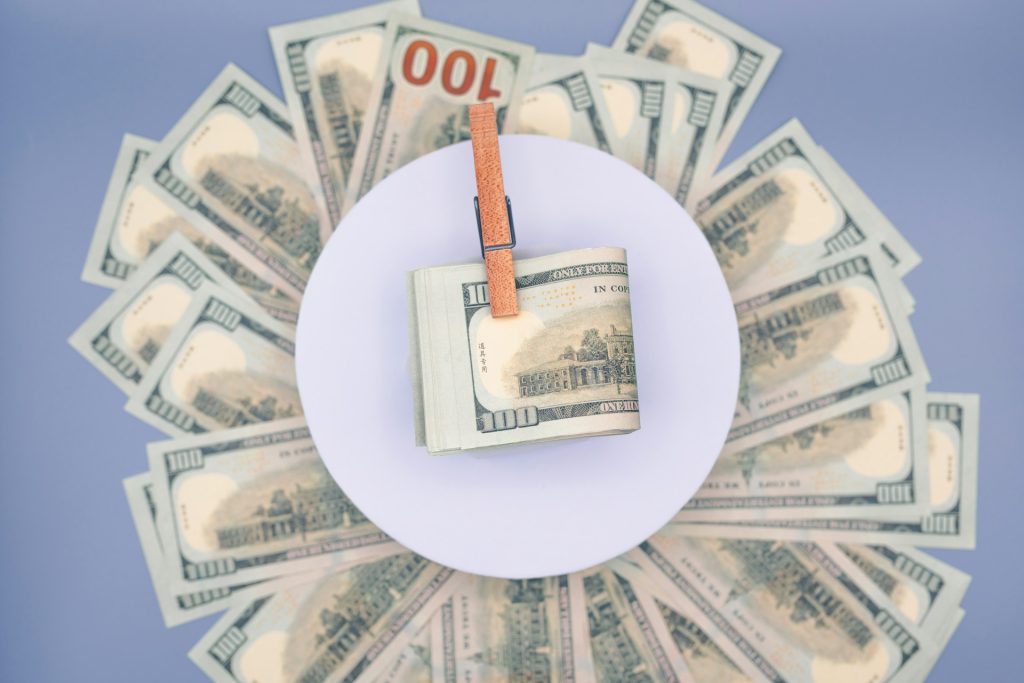How To Create a Real Estate Cash Flow Model

Many real estate investors struggle with accurately forecasting their property’s cash flow, leading to unexpected financial shortfalls and missed opportunities. Without a detailed cash flow model, it’s difficult to see the full picture of income versus expenses, which can result in poor investment decisions.
A real estate cash flow model breaks down all sources of income and expenses, helping you predict profitability and manage risks effectively. This post walks you through the essential steps to build a reliable cash flow model that supports smarter investment planning and sustained financial success.
Key Takeaways
- A comprehensive cash flow model includes all income streams, operating expenses, and debt service to provide a clear financial snapshot.
- Regularly updating your model helps account for market changes, vacancy rates, and unexpected costs, keeping projections accurate.
- Understanding metrics like Net Operating Income (NOI) and debt service coverage ratio (DSCR) is key to evaluating property performance.
What Is a Real Estate Cash Flow Model?
A real estate cash flow model is a tool that helps you forecast the income and expenses of a property. Accurate cash flow projections are crucial for making informed investment decisions and ensuring long-term profitability.
Key components of a cash flow model include:
- Income: This is the total revenue generated from the property, such as rent, parking fees, and other sources.
- Expenses: These are the costs associated with managing and maintaining the property, including repairs, taxes, and insurance.
- Net Operating Income (NOI): This is calculated by subtracting the operating expenses from the income. NOI indicates the property’s profitability before financing and taxes.
- Cash Flow: This is the amount of money left after all expenses, including mortgage payments, have been deducted from the income.
7 Benefits of Using a Cash Flow Model
- Better Decision-Making: A cash flow model provides clear financial projections, enabling you to make informed investment choices.
- Risk Management: By forecasting potential income and expenses, you can identify and mitigate financial risks early on.
- Planning and Budgeting: A detailed cash flow model helps you plan and allocate resources efficiently, ensuring financial stability.
- Increased Co-Investor Confidence: Accurate projections can boost confidence among co-investors, making group investing more attractive and feasible.
- Cash Flow Monitoring: Regularly updated models allow you to track and manage cash flow, ensuring ongoing profitability.
- Financing Strategies: A cash flow model can help you assess the viability of different financing options and choose the best one.
- Performance Evaluation: Use the model to compare actual performance against projections, helping you adjust strategies as needed.
Steps to Create a Real Estate Cash Flow Model
Step 1: Gather Financial Data
Start by identifying all sources of income. This includes rent payments, parking fees, laundry services, and any other revenue streams associated with the property. Make you have accurate records of these incomes to predict future cash flows reliably.
Next, account for all types of expenses related to the property. Consider costs such as property management fees, maintenance and repairs, insurance, property taxes, utilities, and mortgage payments.
Step 2: Calculate Gross Rental Income
To calculate gross rental income, start by projecting the rental income for each unit or property. Consider factors that may impact rental income positively or negatively, such as market trends, location, property condition, and local economic conditions. Regularly review and adjust your projections to reflect changes in these factors year over year.
Vacancy rates play a crucial role in rental income projections. Forecasting vacancy involves analyzing historical data, market conditions, and seasonal trends. It’s vital to account for potential vacancies and turnover periods. Underestimating the length of vacancy during tenant turnover can significantly impact your cash flow, so always include a buffer to mitigate this risk.
Step 3: Estimate Operating Expenses
There are two types of operating expenses to consider: fixed and variable.
Fixed expenses remain constant regardless of the property’s occupancy, such as property taxes and insurance. Variable expenses fluctuate based on usage and occupancy, including utilities and maintenance costs.
Common expense categories to include in your real estate cash flow model are:
- Property management fees
- Maintenance and repairs
- Insurance premiums
- Property taxes
- Utilities (water, electricity, gas)
- Landscaping and groundskeeping
- Marketing and advertising
- Legal and accounting fees
- Reserve funds for capital expenditures
Step 4: Determine Net Operating Income (NOI)
Net Operating Income (NOI) is a key metric in real estate investment, representing the income generated after deducting operating expenses.
The formula for calculating NOI is straightforward:
- NOI = Gross Rental Income – Operating Expenses
For example, if a property generates $200,000 in gross rental income and incurs $50,000 in operating expenses, the NOI would be:
- NOI = $200,000 – $50,000 = $150,000
Investors and other stakeholders use NOI to assess a property’s profitability and compare it with other investments. Formulas like the capitalization rate (cap rate) and debt service coverage ratio (DSCR) often utilize NOI to evaluate investment performance.
Step 5: Account for Debt Service
Debt service refers to the payments required to cover the interest and principal on a loan. It significantly impacts cash flow, as high debt service can reduce the available cash for other expenses and investments.
Fixed-Rate vs. Floating-Rate Debt
When modeling debt service, understanding the difference between fixed-rate and floating-rate debt is crucial. Fixed-rate debt has consistent payments, providing stability and predictability. Floating-rate debt varies with market interest rates, introducing potential volatility in your cash flow projections.
This distinction is critical when creating a cash flow model for multiple years. Fixed-rate debt allows for more accurate long-term projections. On the other hand, floating-rate debt requires careful consideration of interest rate trends to avoid underestimating future obligations.
Step 6: Calculate Cash Flow
Calculating cash flow involves subtracting operating expenses and debt service from the gross rental income. Let’s break down the details using the numbers from Step 4.
Assume your property generates $200,000 in gross rental income annually. This income includes:
- $180,000 from tenant rent payments
- $10,000 from laundry facilities
- $10,000 from parking fees
Next, account for operating expenses, which totaled $50,000. These expenses include:
- $15,000 for property management fees
- $10,000 for maintenance and repairs
- $5,000 for insurance premiums
- $10,000 for property taxes
- $5,000 for utilities
- $5,000 for other miscellaneous expenses
Subtract these operating expenses from your gross rental income to get the Net Operating Income (NOI):
NOI = $200,000 – $50,000 = $150,000
Now, include debt service. Suppose your annual debt service (interest and principal) is $110,000. Subtract this amount from the NOI to determine your cash flow:
Cash Flow = $150,000 – $110,000 = $40,000
Step 7: Regularly Update Your Model
Market conditions can change rapidly, affecting rental rates and occupancy levels. Economic shifts, such as changes in interest rates or inflation, can impact your expenses and debt service.
Keeping your model current ensures you are prepared to adapt to these fluctuations, allowing for informed decision-making.
Additionally, property-specific factors necessitate regular updates. Maintenance and repair costs can vary year over year, and unexpected expenses may arise. Tenant turnovers and lease renewals also affect your income projections.
By regularly revising your model, you can account for these variables, ensuring your financial projections remain realistic and actionable.
Frequently Asked Questions

What is a real estate cash flow model and why is it important?
A real estate cash flow model forecasts the income and expenses of a property over time, providing insight into its profitability. It is essential for making informed investment decisions and managing financial risks. For more, see Investopedia’s cash flow basics.
What are the main components of a cash flow model?
Key components include gross rental income, operating expenses (fixed and variable), debt service payments, and vacancy allowances. These elements combine to calculate Net Operating Income (NOI) and overall cash flow.
How do I account for vacancy rates in my cash flow projections?
Vacancy rates are estimated based on historical data and market trends, then deducted from gross rental income to avoid overestimating revenue. Including a buffer for tenant turnover ensures more realistic projections.
What is Net Operating Income (NOI) and how is it calculated?
NOI is the income remaining after subtracting operating expenses from gross rental income, excluding debt service and taxes. It measures a property’s profitability before financing costs.
How does debt service impact cash flow modeling?
Debt service includes mortgage principal and interest payments, which reduce the cash flow available from the property. Differentiating between fixed-rate and floating-rate debt helps forecast payment stability and risks. For financing insights, visit the Mortgage Bankers Association.
Tired of second-guessing your investment numbers?
Learn how to find profitable real estate deals.
Get instant access to professional-grade property analysis tools from DealCheck.io and start evaluating properties in minutes!
Enter the code BESTDEAL at check out and receive a 20% Off Discount!

Dive deep into the world of real estate investment with this comprehensive case study that brings theory to life.
Investment Real Estate Analysis: A Case Study offers an unparalleled look at the decision-making process behind successful property investments. Follow along as we dissect a real-world scenario, revealing the critical factors that seasoned investors consider before making a move.
From crunching numbers to assessing market conditions, this book walks you through every step of the analysis process. Learn how to evaluate potential investments like a pro, understanding key metrics such as cap rates, cash-on-cash returns, and internal rate of return.
Whether you’re a novice investor or looking to refine your skills, this case study will equip you with the tools to make informed investment decisions in the competitive real estate market.
Get your copy now from your favorite bookseller:
- Amazon
- Books2Read for Apple, Barnes & Noble, Kobo, Scribed, and 8 more sellers with both eBook and paperback options available
- Payhip as a downloadable PDF
Ready to take your business to the next level?
- Subscribe to our newsletter
- Visit the learning center
- Learn more about our consulting services